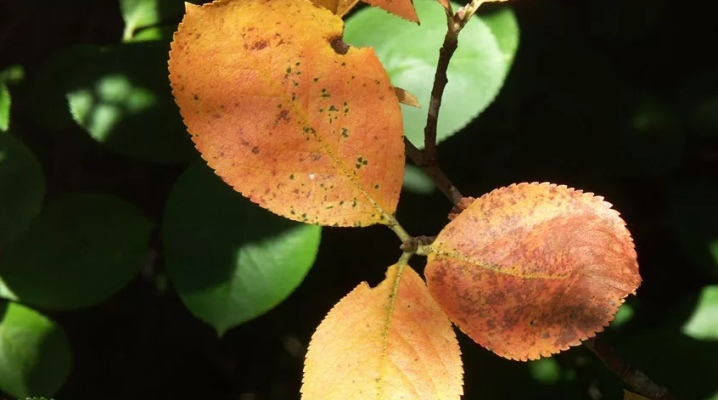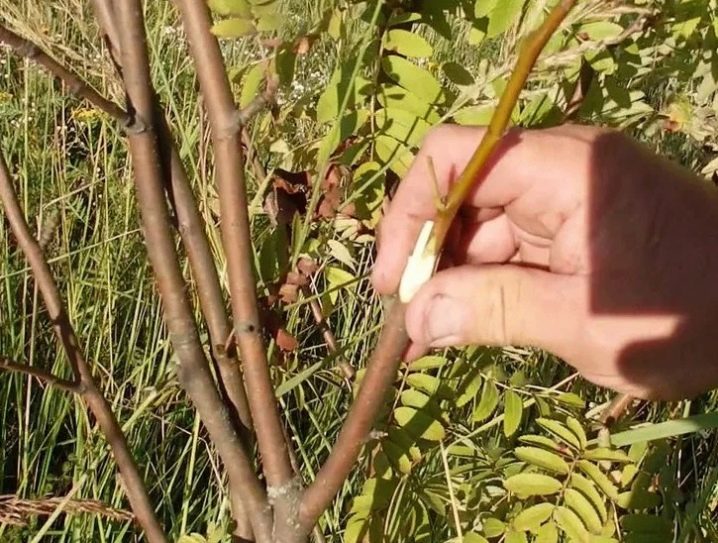Why do the leaves of the chokeberry turn yellow?

Growing chokeberry in their area, many gardeners face different problems. The most common of these is yellowing of the leaves in late spring or early summer. When you notice yellow foliage on a tree, it is very important to find out the reason for its appearance and help the tree to recover.
Signs
Chokeberry foliage usually begins to dry from below. First of all, the leaves at the edges of the branches suffer. The color usually changes gradually. The speed of this process depends on the reasons for the yellowing of the foliage. As a rule, in the next couple of days after changing the flowers of the foliage, it dries and falls off. If the plant bears fruit at this time, the berries may also fall off. This usually happens even before they are fully ripe.

Causes of yellowing leaves
It can be very difficult to understand why a plant is weakening. Typically, foliage turns yellow for the following reasons.
Wrong vaccination
If a gardener decides to plant chokeberry on an apple, pear or any other plant, the result of this procedure can be quite unpredictable. Very often trees develop slowly and bear poor fruit. In case of improper grafting, noticeable thickenings may appear over the junction of the rootstock and scion. The plant becomes less resistant to temperature changes. Young growth begins to actively grow near the main trunk.

Lack of nutrients
In summer, the color of the foliage of the chokeberry can also change due to a lack of nutrients. Typically, the leaves lack the following elements.
- Nitrogen. If plants are severely deficient in nitrogen, their foliage turns light green and then turns yellow. It differs not only in its color, but also in its small size.
- Potassium. The main symptom of a lack of this element is the appearance of a red rim on the foliage. It is growing very quickly. In a short time, the foliage begins to dry out.
- Phosphorus. With a lack of phosphorus, the leaf plates acquire a dark purple hue. In the future, they begin to blacken and dry out.
- Magnesium. Most often, trees growing on sandy soils suffer from a lack of this element. Especially often it manifests itself in rainy weather or if the gardener is too keen on watering the plants. After all, water very quickly leaches magnesium from the soil.
In this case, chokeberry can also suffer from a lack of moisture. Therefore, if the summer is too hot, it is very important to devote time to regular watering of the trees.

Diseases
Like most other plants, rowan foliage can turn yellow due to the fact that the tree has been affected by some kind of disease. Most often, chokeberry suffers from the following diseases.
- Powdery mildew. This is one of the most common diseases. It is very easy to recognize her. The foliage of the diseased plant is covered with a dense bloom, which looks like flour. Over time, the leaf plates also turn yellow and dry out. If you do not start fighting this disease in time, it can spread very quickly throughout the garden. Powdery mildew is dangerous to most shrubs and trees.
- Rust. This disease is also quite common. It affects both young trees and adults. Yellow spots appear on plant foliage. They spread over time. Because of this, the foliage dries out quickly. The tree weakens at this time and loses its winter hardiness.If you do not start treating the disease in time, the plant may well die.
- Moniliosis. This disease is known to many as fruit rot. It usually develops in hot and dry summers. At this time, the foliage actively turns yellow and becomes fragile and brittle.
- Scab. This disease causes not only a change in the color of the foliage, but also a general weakening of the plant. Over time, dark spots appear on its surface. High humidity contributes to the development of this disease.
- Root rot. This condition is also known as honey fungus. Yellowing of foliage is one of the main symptoms of this disease. The situation is complemented by black spots that appear on the trunk and shoots.
All these diseases are dangerous to plants. Therefore, it is definitely impossible to ignore them.


Pests
The activity of pests can also lead to yellowing of the leaves. Chokeberry is commonly attacked by insects such as aphids, ticks, and the mountain ash moth. The foliage of diseased plants is quickly deformed.
You can understand that the problem lies precisely in the attack of pests by examining the tree. It will be easy to spot insects or traces of their activity on it.

Control measures
The following procedures will help to save a plant with yellowed foliage.
- Processing of trees. To save a diseased plant, the affected branches must be removed and destroyed. After that, the tree must be treated with Bordeaux mixture or any other substitutes for it. Any proven insecticide is used to control insects.
- Plant feeding. It is very important that the plants are not severely deficient in nutrients. Therefore, chokeberry should be fed regularly.
- Watering. If the foliage begins to dry out in the heat, the tree must be watered. As a rule, plants recover from stress rather quickly and recover.
It is best to carry out all these procedures in the evening or in cloudy weather.


Prophylaxis
So that the foliage of the chokeberry does not turn yellow ahead of time, the plant needs to be provided with proper care. Although chokeberry is a rather unpretentious tree, it should be watered and fed. In the fall, it is very important to clear the site of plant debris. If the plant was sick in the summer or was attacked by pests, they must be taken out of the site or burned.
Helps to protect the tree from yellowing of foliage and treatment of the plant with drugs such as "Fufanon" and "Actellik". It is usually carried out in the spring. When planting plants, you need to pay attention to choosing a place for a tree. It is not recommended to plant it next to a juniper. This is often the reason for the spread of many diseases.
If you do everything right, the chokeberry will delight the owners of the site for a long time not only with its attractive appearance, but also with delicious berries.































































The comment was sent successfully.